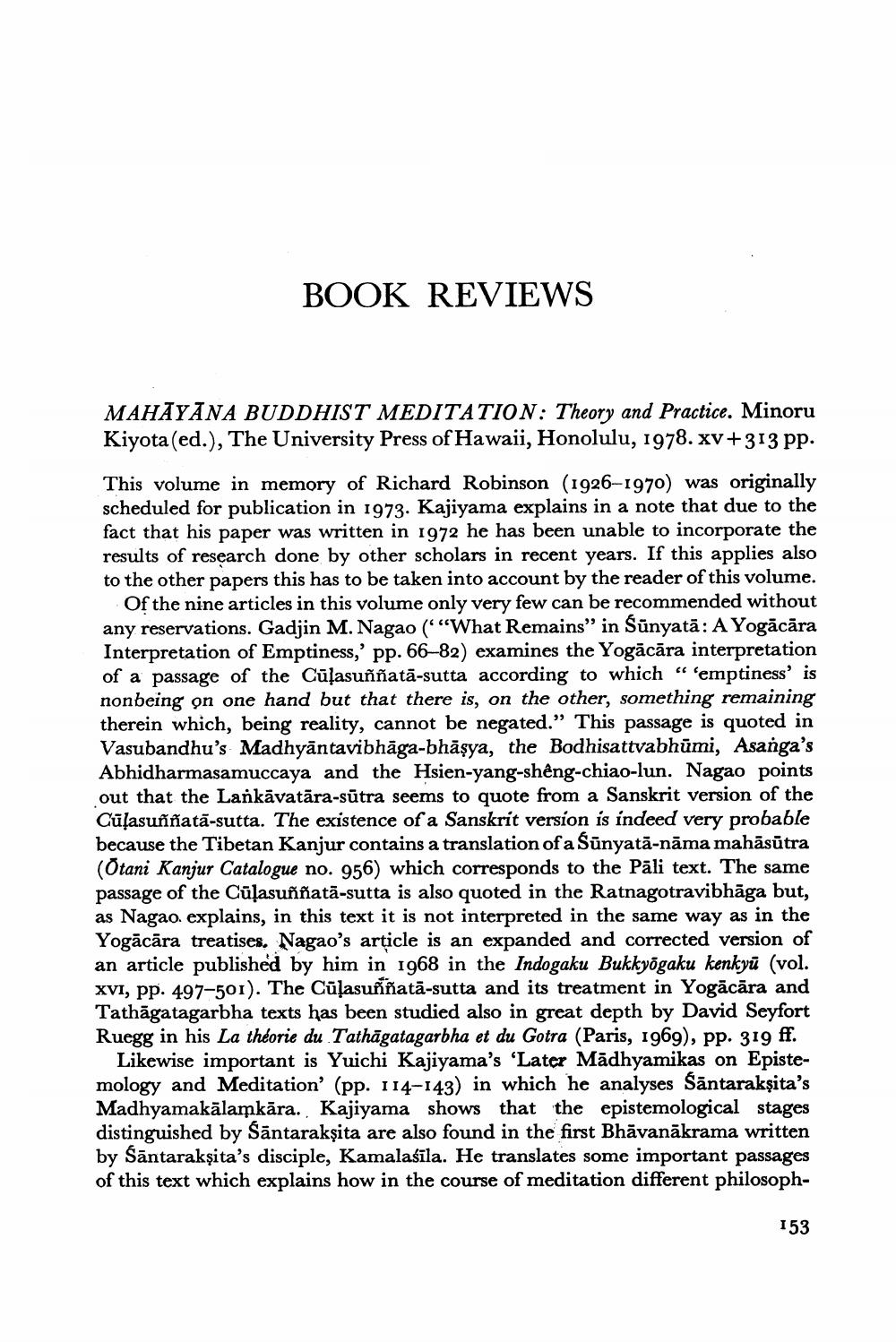________________
BOOK REVIEWS
MAHĀYANA BUDDHIST MEDITATION: Theory and Practice. Minoru Kiyota (ed.), The University Press of Hawaii, Honolulu, 1978. xv+313 pp.
This volume in memory of Richard Robinson (1926-1970) was originally scheduled for publication in 1973. Kajiyama explains in a note that due to the fact that his paper was written in 1972 he has been unable to incorporate the results of research done by other scholars in recent years. If this applies also to the other papers this has to be taken into account by the reader of this volume.
Of the nine articles in this volume only very few can be recommended without any reservations. Gadjin M. Nagao ("What Remains" in Sūnyatā: A Yogācāra Interpretation of Emptiness,' pp. 66-82) examines the Yogācāra interpretation of a passage of the Cūļasuññatā-sutta according to which “ emptiness' is nonbeing on one hand but that there is, on the other, something remaining therein which, being reality, cannot be negated." This passage is quoted in Vasubandhu's Madhyāntavibhāga-bhāşya, the Bodhisattvabhūmi, Asanga's Abhidharmasamuccaya and the Hsien-yang-shêng-chiao-lun. Nagao points out that the Lankāvatāra-sūtra seems to quote from a Sanskrit version of the Cūļasuññatā-sutta. The existence of a Sanskrit version is indeed very probable because the Tibetan Kanjur contains a translation of a Sūnyată-nāma mahāsūtra (Otani Kanjur Catalogue no. 956) which corresponds to the Pāli text. The same passage of the Cūļasuññatā-sutta is also quoted in the Ratnagotravibhāga but, as Nagao explains, in this text it is not interpreted in the same way as in the Yogācāra treatises. Nagao's article is an expanded and corrected version of an article published by him in 1968 in the Indogaku Bukkyōgaku kenkyū (vol. XVI, pp. 497-501). The Cūļasuññatā-sutta and its treatment in Yogācāra and Tathāgatagarbha texts has been studied also in great depth by David Seyfort Ruegg in his La théorie du Tathāgatagarbha et du Gotra (Paris, 1969), pp. 319 ff.
Likewise important is Yuichi Kajiyama's 'Later Madhyamikas on Epistemology and Meditation (pp. 114-143) in which he analyses Sāntarakṣita's Madhyamakālamkāra. Kajiyama shows that the epistemological stages distinguished by Sāntarakṣita are also found in the first Bhāvanākrama written by śāntarakṣita's disciple, Kamalaśīla. He translates some important passages of this text which explains how in the course of meditation different philosoph
153




